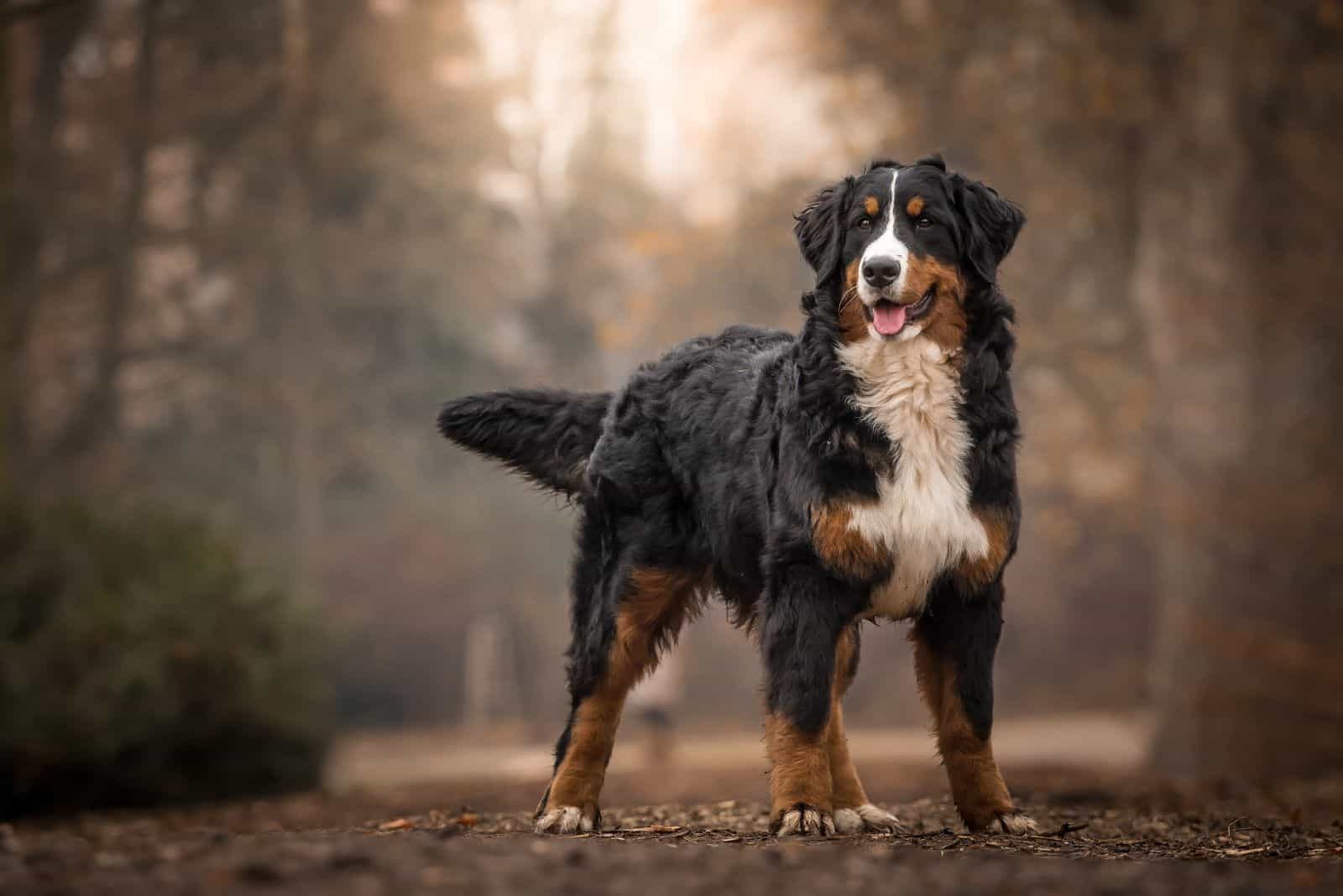Before bringing one into your home, you probably want to know one important thing: do Bernese Mountain Dogs shed?
The popularity of Bernese Mountain Dogs, often known as Berners, has increased over the past years due to their magnificent appearance and fluffy fur. Their calm nature has made them a popular choice for family pets. How do their owners, though, deal with all that dog hair?
That and all of the other burning questions about Berner shedding that you might have are addressed in this post.
As a new owner, you’ll learn what to anticipate, such as when your dog may shed more during the year. We’ll also offer some advice on how to minimize the loose fur in your home.
Do Bernese Mountain Dogs Shed?
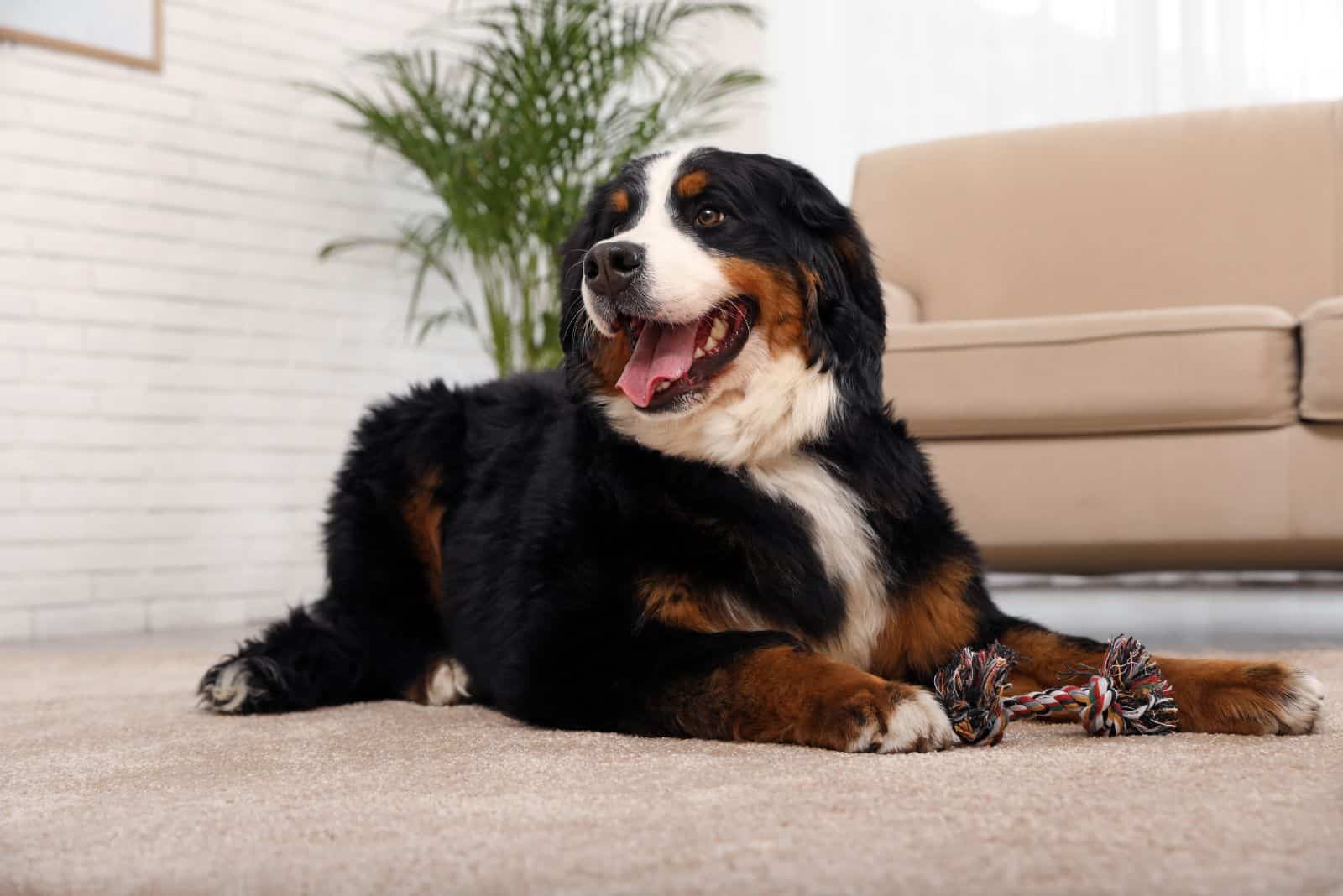
It should go without saying that Bernese Mountain Dogs do shed.
Therefore, you’ve either found yourself here looking for information on how much shedding to anticipate before adopting one or you currently own one and are having trouble understanding why they are shedding so much.
These dogs can shed a lot since they are a double-coated breed and have lengthy, thick coats. However, frequent grooming with the right equipment can help lessen the amount of fur they shed.
Let’s examine these dogs’ origins, the type of coat they have, and how much work it will take to keep them looking well.
Bernese Mountain Dogs Breed Background And Info
Before getting into the nitty-gritty of the Berner shedding habits, we should probably touch on the breed in general.
Let’s start by talking a bit about their history and then move on from there.
Bernese Mountain Dog Breed History
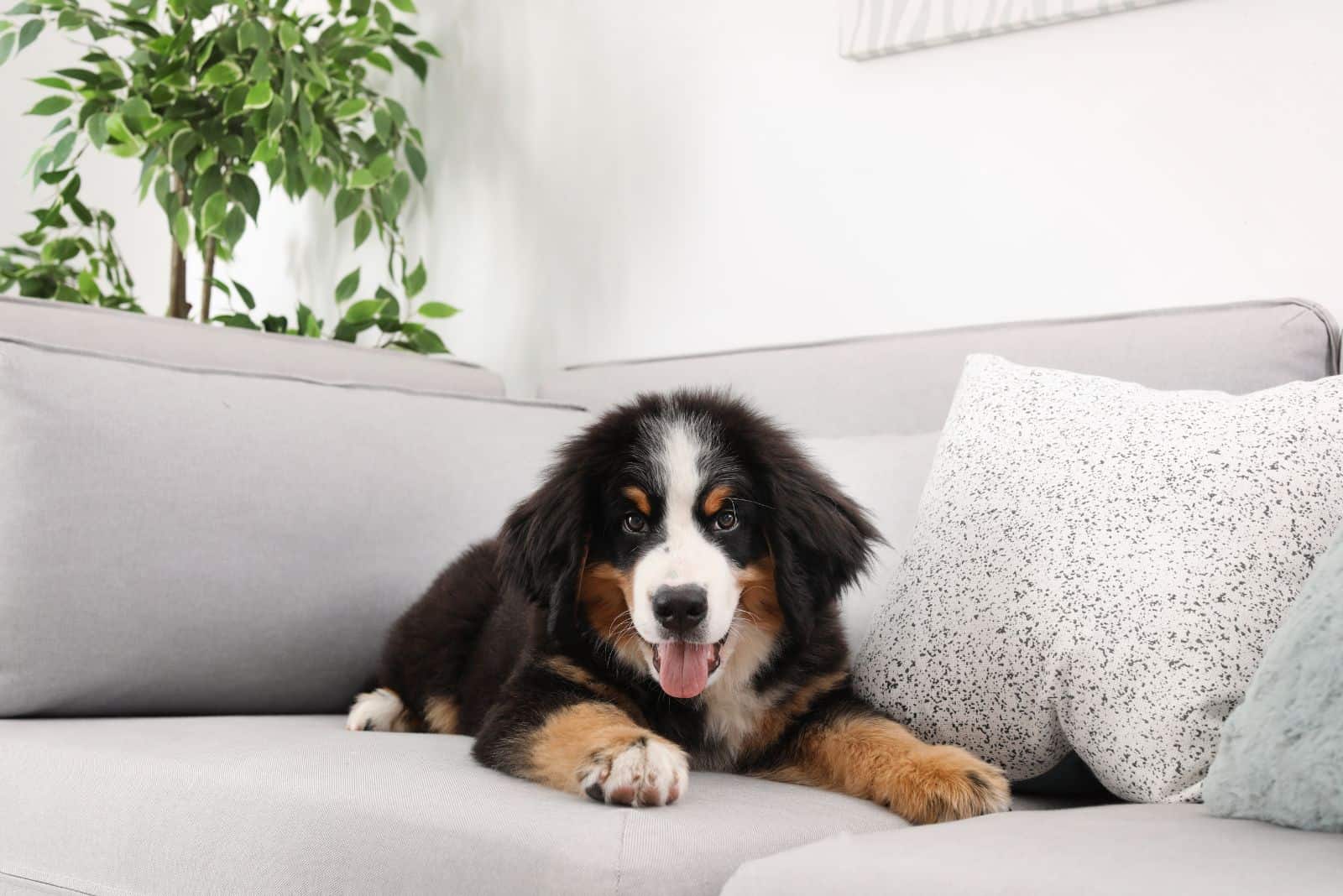
They were initially created as a hybrid between Mastiffs and guard dogs, which explains some of their size.
They were first brought to Switzerland around 2,000 years ago and they became known as one of the four types of Swiss mountain dogs, which had thick coats that helped them survive in cold weather environments like the Swiss Alps.
They were initially brought in to assist with farming, which makes sense given that they are excellent working dogs with extraordinary power.
These canines can actually lift ten times their own body weight! To put that into perspective, this dog can pull 1,000 pounds, which is roughly the weight of an adult horse.
However, things began to change in the early 1900s as this dog’s breeding rate substantially decreased. They transitioned from being working dogs to show dogs in 1907, and they increased their socialization levels.
Read next: Bernese Mountain Dog Cost: Puppy Prices, Care, And Expenses
Bernese Mountain Dog Appearance And Personality
One of the first things you’ll notice about Bernese Mountain Dogs is their size. They are a huge breed of dog that can weigh up to 110 pounds and range from 23 to 28 inches in height.
Because they are useful and affectionate, they are a very popular breed of dog today. According to the AKC, they are the 20th most owned breed in the USA today.
Even though they are a large breed, they are especially beloved for their gentle demeanor and protective nature around small children.
To be content, Bernese mountain dogs require a lot of mental and physical stimulation. They can develop hyperactivity or destructive tendencies if they don’t receive enough care, stimulation, or nourishment during the day.
Bernese Mountain Dogs Coat Types
The Bernese Mountain Dog is one of the four tri-colored Swiss Mountain dogs. They have thick, comparatively long, and typically straight fur.
Additionally, they have two layers of fur: an undercoat and a top coat, which is known as having a double coat. The upper coat has long hair, while the undercoat typically has short fur with a wool-like texture. This contributes to the fluffy appearance of Bernese Mountain Dogs.
However, because they were developed to resist extreme temperatures, this coat fits them perfectly. They are protected from the heat and cold by their undercoat, and filth and moisture are repelled by their top coat.
By the way, if you are interested in getting a Berner, check out our list of the best breeders in the country.
Bernese Mountain Dogs Coat Colors
The Bernese Mountain Dog breed standard suggests that they don’t really come in a rainbow of colors. In fact, they only have a few varieties.
The majority of dogs will have predominantly black coats with some white and copper accents, which is a color scheme that is also shared by other Swiss mountain dog breeds with related ancestries.
For owners who have darker-colored flooring or furnishings, it usually blends in better because their coats typically have more black fur than other hues. You’ll most likely need to keep up with your grooming routine a little more diligently if you have lighter-colored furniture.
Reasons For Bernese Mountain Dog Shedding
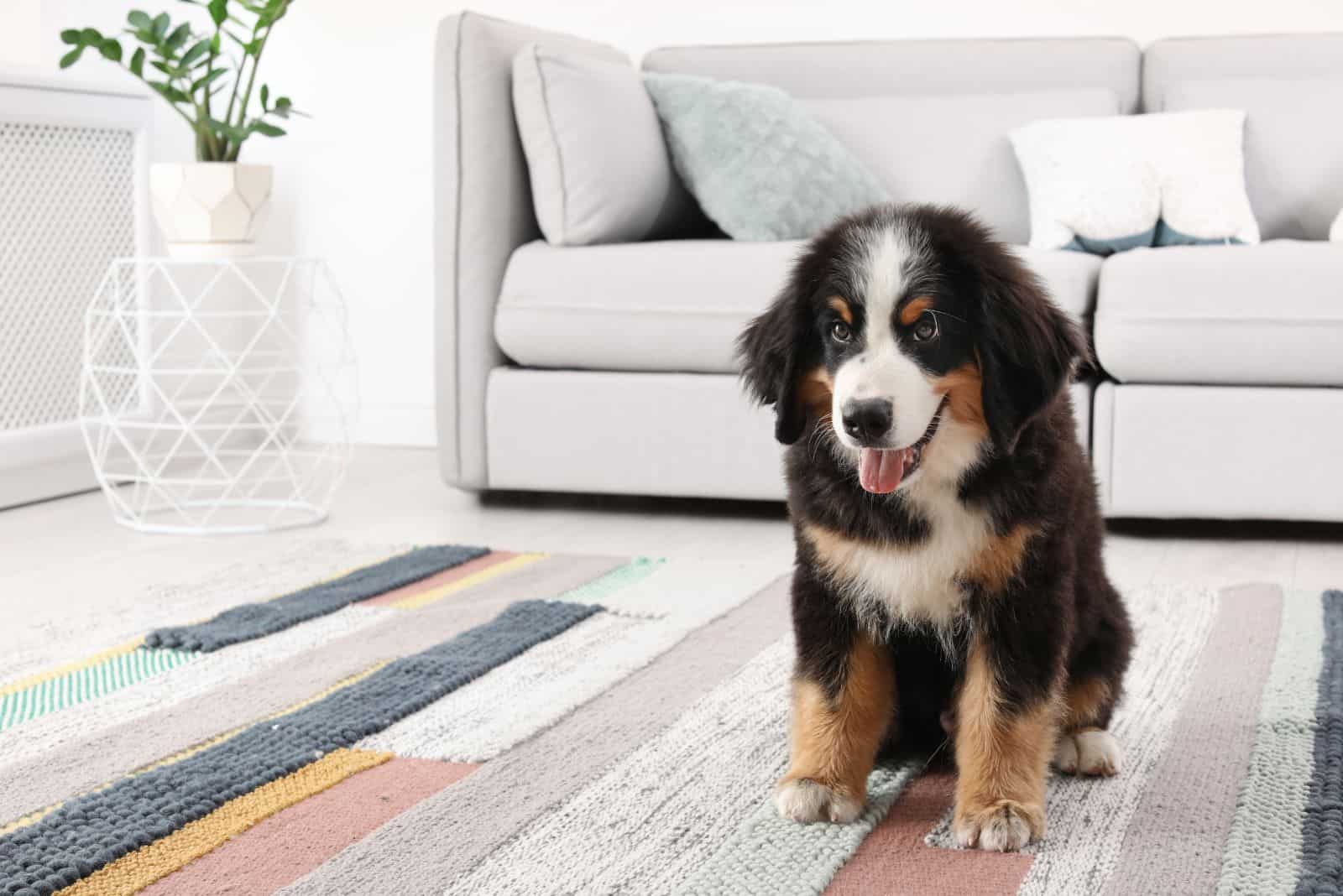
The Berner sheds year-round, and in the summer and winter, their shedding activity intensifies. The fur they leave behind is more obvious than that of a German Shepherd or another double-coated high-shedding breed because of their long hair.
This is probably pretty much what you expected, they’re not hairless dogs, after all, are they?
Depending on the temperature outside, their undercoats will begin to shed at this time of year to make room for one that is either thicker or thinner.
You’ll need to really stay on top of keeping your Bernese regularly brushed during their blown-coat seasonality. In order to keep the fur down in the early summer, you may even want to brush your dog every day.
Aside from this regular shedding frequency, there could be outside factors that make your Berner shed more than it should.
Factors That Make Bernese Mountain Dogs Shed More
If you already have a Berner, there can be additional causes for their heavy shedding. There are a number of additional factors that can affect how frequently their fur sheds outside of shedding season.
Following are a few things to watch out for if your Bernese is losing more hair than usual.
Anxiety And Stress
Bernese are by nature an anxious breed. They may experience separation anxiety, and one of the many typical signs of a stressed-out or unhappy dog is shedding.
Any routine disruptions, such as not spending enough time with family or bringing a new dog or baby into the house, can make them anxious and clingier than normal.
A Recent Change In Diet
Your Bernese’s shedding frequency may change if its diet changes. Some dogs might need to switch to a food brand with fewer ingredients in their diet.
If you see more shedding than usual, it’s possible that your dog has a food allergy, in which case you might think about modifying the diet.
Skin Conditions
Your dog may sweat more regularly than usual due to skin disorders brought on by mites, fleas, and other insects.
Additionally, a new dog shampoo or treat that you’ve given your dog may also have caused a skin allergy in them.
Other Health Issues
Serious health issues, however less frequent, can result in extra fur loss. One example is canine alopecia.
Consult your veterinarian if your dog’s behavior has altered in addition to noticing additional fur around your house.
How To Deal With Your Bernese Mountain Dog Shedding
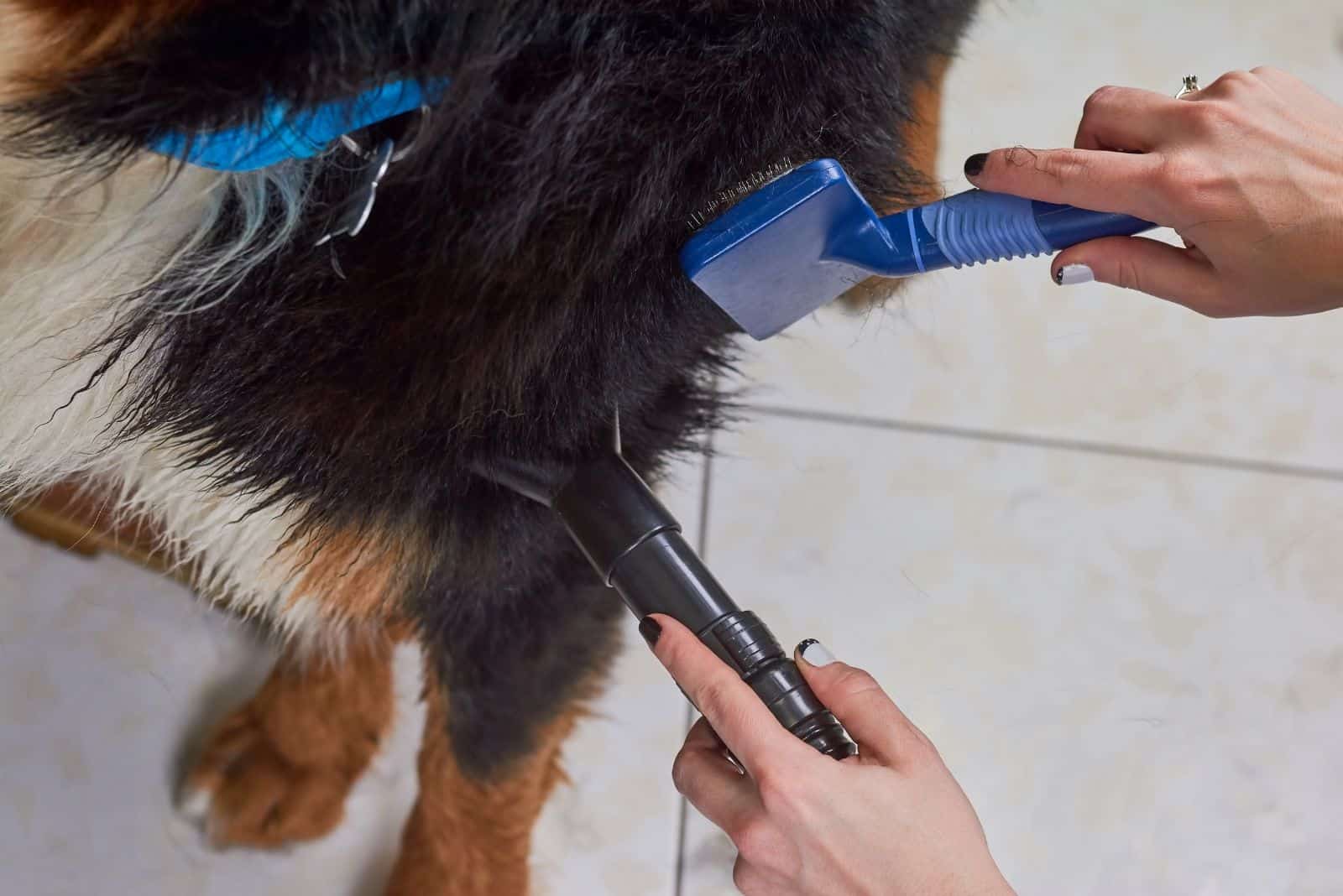
You’ve determined that the Berner is the ideal breed for you, but you need tips for efficiently managing their shedding issues?
All heavy-shedder breeds require an efficient DIY grooming regimen. Consider getting a Berner mix, if you can’t manage to brush every day during the shedding season and bathe once a month.
These puppies frequently share the same color and have the reputation of having less shedding than their Bernese parent.
There are several things to keep in mind if you want to be prepared to deal with your Berner’s shedding tendencies. Below are some tips.
Brushing
During regular shedding seasons, brushing should be done roughly three times every week. This ought to be sufficient to keep the hairs outside of your house and off of your furniture.
An extended pin brush is advised because you can’t really reach the depth with a bristle brush to keep their coat flowing and tangle-free.
During brushing sessions, a longer pin brush will make it easier for you to reach their undercoat, which is where a lot of dead dog fur may be found.
Unlike some of their crossbreeds, such as the Bernedoodle, Berners shed heavily and need more carre.
Consider brushing every day during the shedding seasons in the winter and the summer.
While daily brushing is advised, you should do it every other day at the absolute least.
De-Shedding Brushes
Additionally, we advise purchasing a de-shedding tool. They assist in digging deeper into the fur and removing lank hair that a brush can’t reach. They are typically pretty affordable, and they can handle the task really well.
Basically, it’s a brush with large teeth that digs deeper into the coat to seize the undercoat. To lessen the quantity of shedding, aim to remove part of the old, fluffy undercoat hair.
Use caution not to repeatedly go over the same part of the coat when using this de-shedding tool because you will get deep into the fur.
If you use this tool too frequently, for example, more than once a week, you risk removing too much undercoat.
Bathing
Your Berner shouldn’t receive more than one bath per month. Your dog could occasionally require a bath after playing in some mud, grass, or leaves.
As long as it isn’t a regular occurrence, doing it more frequently than once a month won’t be harmful to the health of their coat, and it will keep them from smelling bad.
Bathing your dog more frequently than that might drain the natural oils from their coat and leave their skin dry and unhealthy. For routine bathing and to maintain the health of your Berner’s coat, consider using a natural or oatmeal dog shampoo.
Anti-Itch Shampoo
Using an anti-itch shampoo on your dog is a terrific suggestion if they are shedding more than usual. By doing this, you can reduce how much hair ends up on your couches and floors.
You can use this shampoo to prevent the dog from over-scratching itself inside.
Coconut Oil
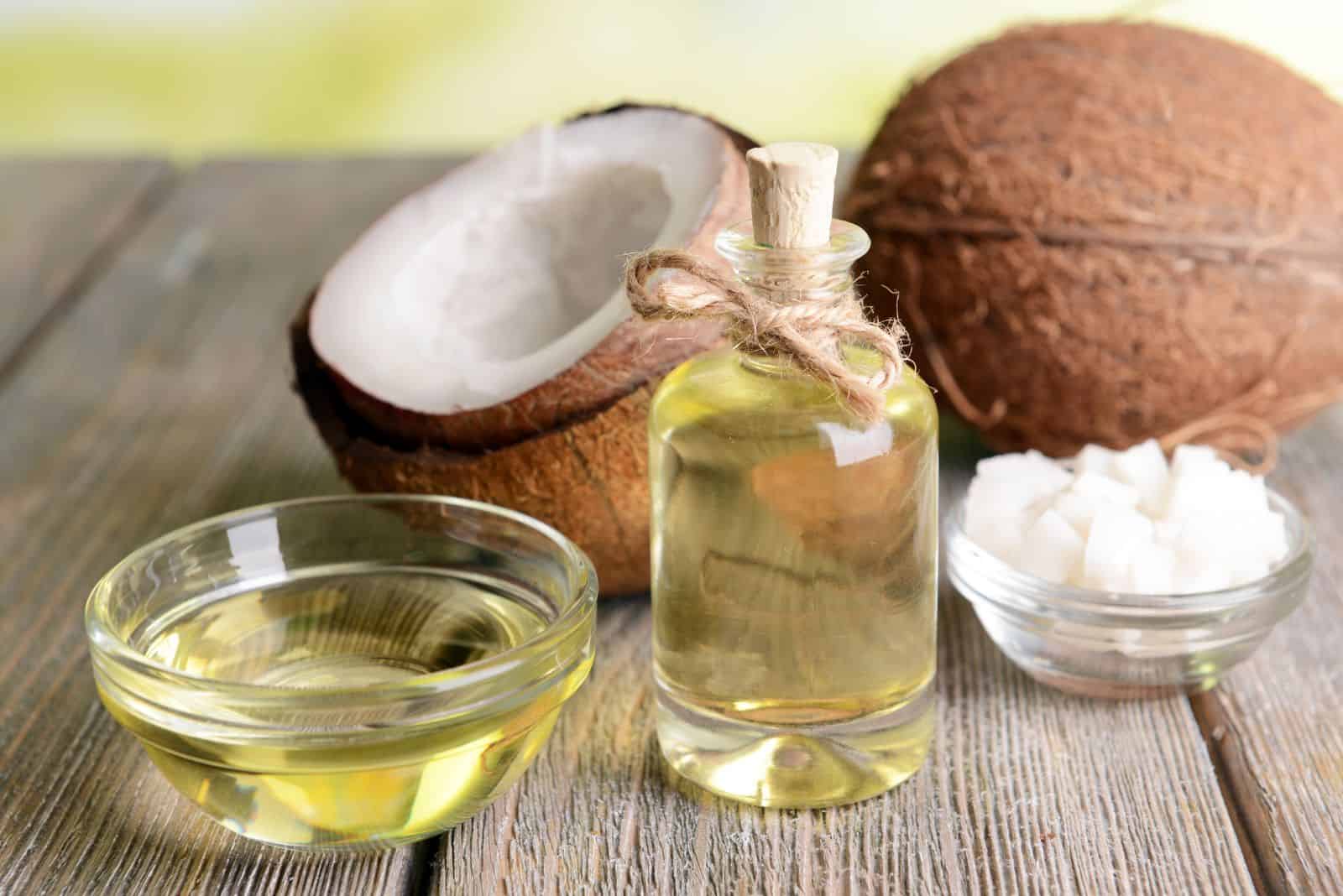
To improve the moisture balance in the skin and fur of your Bernese Mountain Dog, you can also apply some coconut oil.
Just combine 0.2 gallons of water with one spoonful of coconut oil. Every time you use it, make sure to give it a good shake because the two ingredients will not naturally combine.
Fill a spray bottle with the water and oil mixture and you can spray it straight onto the dog’s skin.
A tablespoon of coconut oil can also be given orally to the Berner. You should start with a tiny dose the first couple of times to ensure the dog can handle it.
It should be mentioned, however, that the benefits of coconut oil for dogs are disputed by some and therefore you should exercise caution.
Diet
When it comes to the relationship between diet and healthy coats, the majority of dog owners pay little to no attention. However, as a pet parent, one of the easiest ways to influence your Berner’s coat quality is by providing it with a healthy diet.
Making sure your dog eats dog food rich in omega-3 fatty acids will go a long way toward ensuring their coats remain lustrous and healthy. When it comes to the health of your dog’s coat, premium dog food can take up to a month to start showing results.
Additionally, supplements are always an option if your dog hasn’t responded to a food modification. Typically, all you need is a good omega-3 fatty acids supplement for the health of your pet’s skin and coat.
We advise choosing chewable dog supplements for skin and hair health made by a variety of companies because they are the most convenient.
Bernese Mountain Dog Shedding FAQ
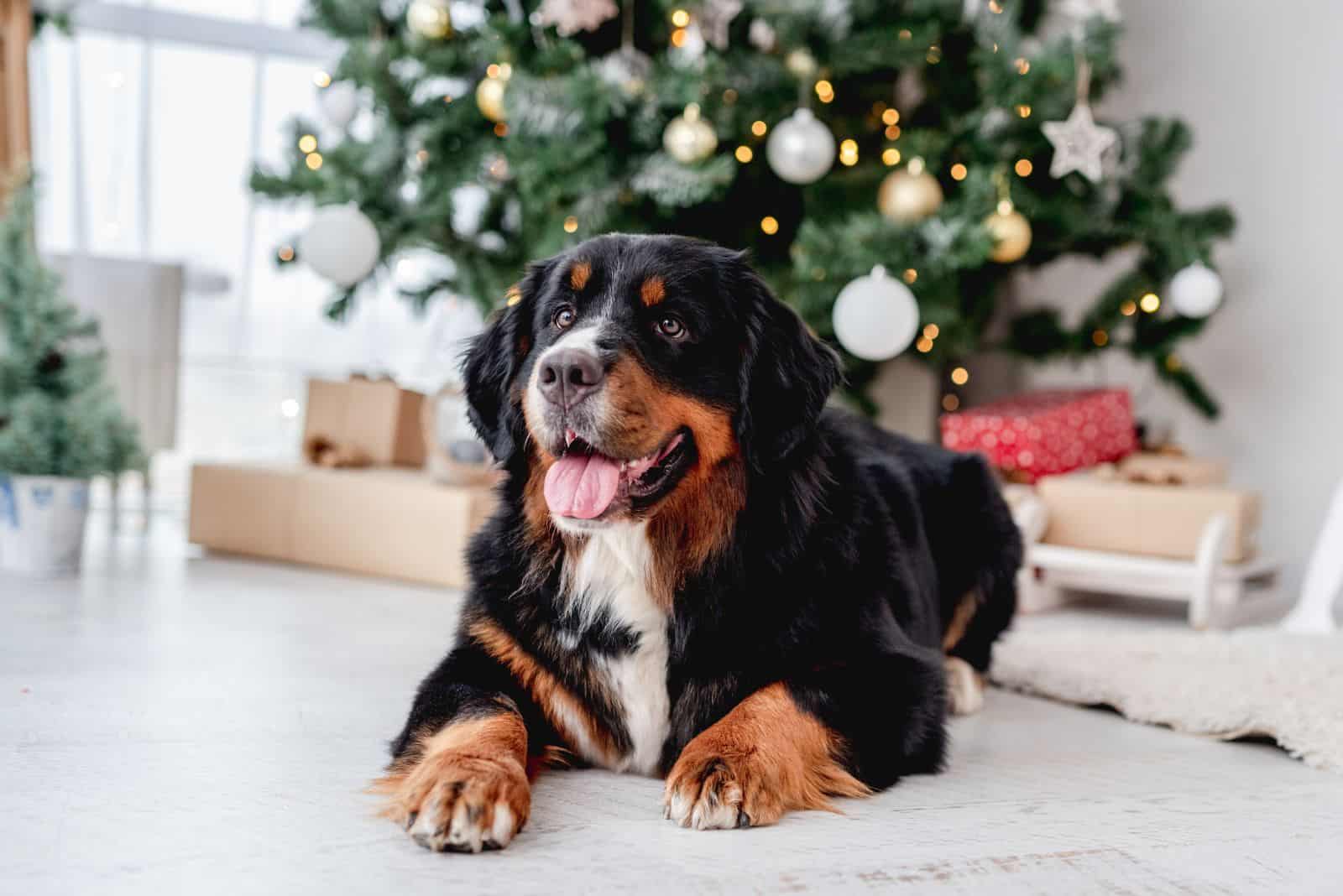
In the following section of the article, we will be covering some of the most frequently asked questions related to the shedding of Bernese Mountain Dogs.
Hopefully, some of these tips will help you learn more about the shedding of Bernese Mountain Dogs, step up your grooming game, and keep them looking as handsome as ever.
Are Bernese Mountain Dogs Hypoallergenic?
In short, they are not. The majority of Berners have two coats, which implies that this breed sheds its undercoat twice a year.
However, they are unique in the fact that some people who are typically allergic to dog hair can still live with them because they don’t have a reaction to their dander or saliva.
Furthermore, the fact that Bernese mountain dogs frequently experience skin allergies themselves prevents them from being considered hypoallergenic.
If you like big dogs, but struggle with allergies, why don’t you check out our list of the best hypoallergenic large dog breeds.
How Badly Do Bernese Mountain Dogs Shed?
They shed regularly all year lon, although spring and fall are known to be their most intense shedding seasons. During these periods they shed more than most dog breeds.
The sheer amount of hair that they shed is basically twice as much as some other breeds like, for example Doberman Pinschers.
When Do Bernese Mountain Dogs Shed The Most?
In the spring and fall, twice a year, Bernese mountain dogs shed a lot more than usual. We advise daily brushing and grooming of your Berner during those seasons if you want to reduce the amount of hair it sheds on your furnishings and clothing.
They continue to shed hair throughout the year, although not as much as they do during their severe shedding seasons.
You should make the necessary preparations for these periods. Consider buying quality grooming tools, like a good brush, just before those seasons arrive!
How Old Are Bernese Mountain Dogs When They Start Shedding?
As a pet owner, you should begin brushing your Berner when they are very young. You’ll need to teach them how to tolerate grooming sessions appropriately even as puppies.
Even though these puppies can tolerate pain rather well, no one likes having their fur tugged every time they move!
Once they have mastered the ability to remain still for an extended period of time, you can progressively increase the intensity by switching to more powerful brushes.
Even though it could take longer for them to completely dry off after baths, make sure your dog receives its daily walks on a regular basis because movement is also good for its fur.
Your Berner’s molting season hair loss will reach its peak between the ages of nine and ten. That’s because, at that point, their hormone levels are declining.
How Much Grooming Do Bernese Mountain Dogs Need?
It might be challenging for dog owners to control the shedding of their Bernese mountain dogs, but there are many ways to achieve it, including daily brushing with a good brush.
They are not exactly low maintenance in that aspect.
Even throughout the peak of the shedding season, daily rubber curry brushing can assist to reduce the dog’s shedding.
For dogs who dislike having their hair brushed, a de-shedding tool or slicker brush is perfect! It’s crucial to regularly brush your Berner’s coat using a premium bristle brush or rubber curry brush in order to remove hair that has already shed but is still embedded in the coat.
When it comes to reducing the amount of shedding produced by Bernese mountain dogs, high-quality tools can really help!
We advise getting a slicker brush for your Berner if they don’t like to be groomed or have sensitive skin. They resemble curry brushes, but they include thin wires that offer more gentle exfoliation in place of the rubber teeth found in curry brushes.
The usage of this kind of bristle is beneficial for the majority of dogs with extremely sensitive skin.
Although the double-coated fur appears to be a little more robust, there are extremely delicate skin cells below. This may be the issue if you notice that your Berner is ripping clumps of fur out of its coat.
There are some general tips that can help you get your Berner used to being brushed. Take your time and treat your dog gently. Every day, spend five minutes brushing it, ideally after a meal or a walk, in order to make it a part of your routine schedule.
Increase the length of brushing sessions gradually until you can do so for up to 15-20 minutes without endangering their skin.
If they still aren’t used to it after the first few days, try adding some treats during this time and lavish them with praise afterward. Simply stop brushing them as soon as they exhibit aggressive behavior, then gradually increase the amount of time between brushes.
After making all of these efforts, if your dog still dislikes being brushed, you might want to think about getting a de-shedding tool. They are specially made to quickly and painlessly get through Bernese Mountain Dog fur without endangering your pet.
Final Thoughts
Don’t let their shedding tendencies stand in the way of your decision to obtain a Bernese Mountain Dog as your new family pet.
They make great family pets and get along with most other animals as well as all children. Your Berner’s coat may be kept under control and your home can be completely fur-free with some daily consistency in the grooming routine.
Although they are sturdy dogs, their thick, woolly coat-like furs make them difficult to groom, especially if you want to keep the shedding to a minimum.So if you don’t want to often clean up dog hair off your couches, this is absolutely not the dog to have. There is a lot to enjoy about them, though, so if you don’t mind putting in a little additional time and effort, this could be the dog for you!
Read Next: The German Shepherd Bernese Mountain Dog Mix: Everything You Need To Know
